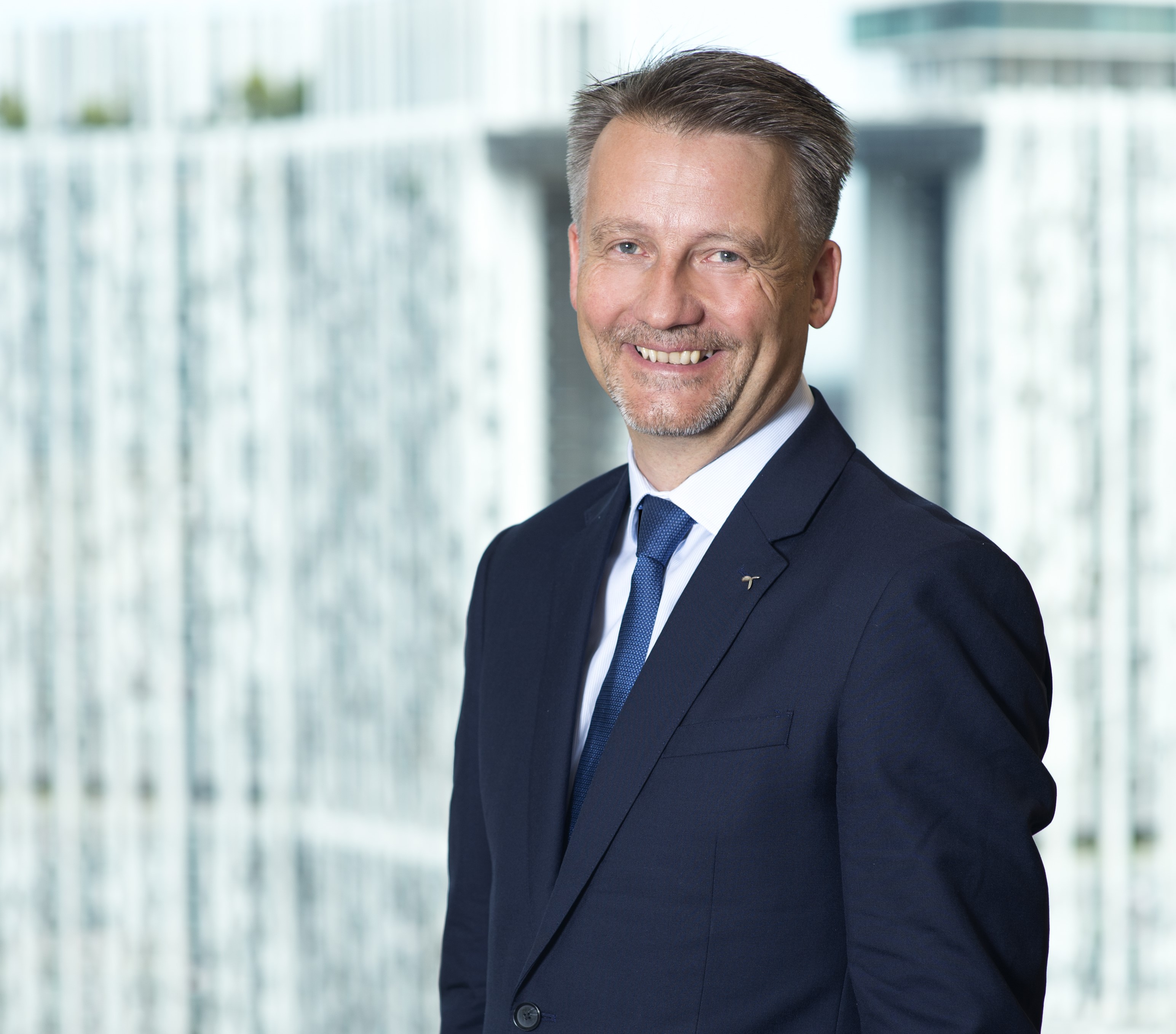Telenor Asia seeks to strengthen market position after completing two mega telco mergers (The Business Times)
Writer: Mindy Tan
View original article on The Business Times
(Source: The Business Times © SPH Media Limited. Permission required for reproduction)
View full article (in PDF)

Norwegian telecoms giant aims to deliver US$1.2b in cashflow from Asia over the next three years
THE past few months have been extremely eventful for Norway’s telecoms giant Telenor Group.
Last week, Telenor Asia – a newly set-up autonomous entity to manage the group’s Asian operations with its headquarters in Singapore – and Thailand’s CP Group finalised the merger of True Corporation and Total Access Communication (DTAC), the second and third-largest mobile operators in Thailand.
At US$20.7 billion, the transaction is the largest telco merger in South-east Asia by combined enterprise value.
This feat came just three months after Telenor and Malaysian conglomerate Axiata Group announced the completion of the merger of Celcom and Digi’s telco operations. The combined entity, called Celcom Digi, has a value of US$14 billion and is the largest local listed technology company on Bursa Malaysia.
As these massive deals made headlines all over the world, Telenor has been fending off persistent rumours that it is looking to exit these markets through such partnerships.
Jorgen Rostrup, the executive vice-president of Telenor Group, said these partnerships are, in fact, meant to strengthen the company’s position in the market.
He posits that the global telco industry as a whole needs more of such mergers to meet the changing consumer demands in the current competitive landscape.
“Consumers use twice as much data now (compared to) before Covid, which is fantastic, (but) they don’t expect to pay more for it. They’re also saying that they are going to continue to use more data. The whole digitalisation journey requires us to change the model and the way we work,” he told The Business Times in an exclusive interview.
“Our reading is that we need bigger units. We need more power, more capacity – financial and organisational – to build the new networks and services, and do this in a way where we can still make money and have a return on it so we can keep investing,” he added.
Rostrup, who is also the head of Telenor Asia, opined that the telco markets in Asia have “too many players with too low profitability”. As such, he believes that there will be more of such mergers and partnerships in the coming years.
“But it takes pragmatism and it takes a willingness to scrutinise how you work and how you want to work with others,” he said.
Telenor Asia was established in October 2022 as a “more independent regional entity” with full oversight and responsibility for the group’s operations in Bangladesh, Malaysia, Pakistan and Thailand. Telenor itself has been active in Singapore since 1998, and its operating companies are market leaders in both Bangladesh and Malaysia.
On the whole, Telenor Asia said in a statement that it aims to deliver US$1.2 billion in cashflow from Asia over the next three years.
In a separate interview with The Bangkok Post, Rostrup said that the company’s merger strategies in Thailand and Malaysia could lead to gains worth up to US$2.5 billion from synergy over the next three years.
With the amalgamations in Thailand and Malaysia now firmly under its belt, Rostrup told BT that the focus going forward will be on operations.
Telenor Asia had earlier identified three main areas of opportunity, including increasing mobile adoption and data usage in Bangladesh and Pakistan; growing business-to-business (B2B) revenue; and expanding customer value by offering services beyond core mobile connectivity.
“Asia is underexposed to B2B compared with other regions, so you will see a lot more B2B effort by all telcos. It’s all related to the new technologies – 5G, Internet of Things (IoT), and AI,” he said. “That is probably the biggest and most value-creating area of growth and development for the telcos and business community at large.”
The current revenue contribution to Telenor Asia from the B2B sector is around 5 per cent. Throughout the pandemic, when the overall telco sector was contracting, Telenor Asia’s B2B revenue was up by 10 per cent.
It is also looking at other partnerships, although “not necessarily as structural or significant”, said Rostrup, adding that one way to do this is by building up the ecosystem.
True Corporation in Thailand is looking to raise US$200 million in venture capital with partners to support promising digital startups. And in Malaysia, Celcom Digi has committed to invest up to RM250 million (S$75.3 million) over five years to build an innovation centre in Kuala Lumpur.
The aim for the latter is to catalyse the digital transformation and strengthen the local ecosystem through the adoption of IoT, AI, cloud computing and 5G.
As for potential acquisitions or partnerships, Rostrup said that while it is always looking at new opportunities, these are few and far between in Asia. He also did not dismiss the possibility of acquisitions but added that the “top priority” is to execute on what the company has at the moment.
He is applying the same attitude to Telenor Asia’s presence in Singapore, with a focus on expanding the team and beefing up operations. He did not reveal details on these plans.
Asked if the company could make any significant moves in Singapore, Rostrup would only say that he is “paying attention” to the telco market here because it is an “interesting space”.
“(Singapore) is not a place where you go in with a new player because it’s a fairly crowded market,” he said. “We are looking at what other things we should do. We will spend some time and then see how things develop.”